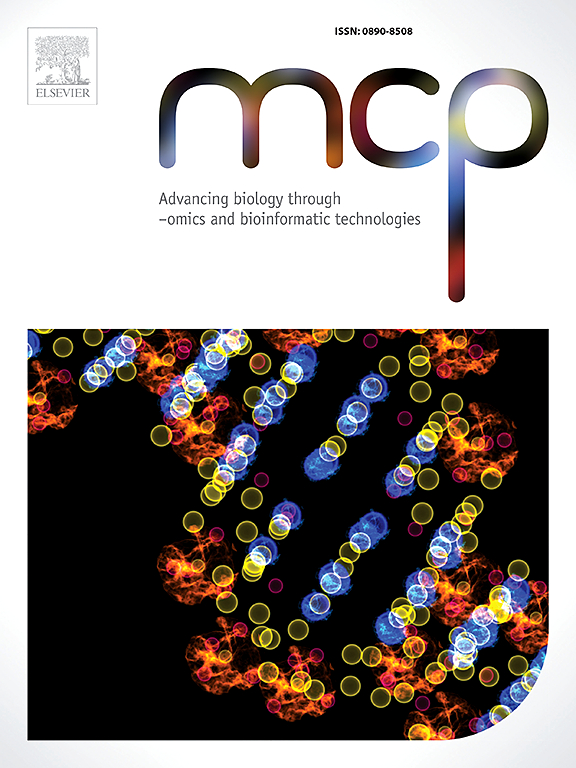血清外泌体miR-454-3p通过抑制HHEX参与肺癌的恶性进展。
IF 2.3
3区 生物学
Q3 BIOCHEMICAL RESEARCH METHODS
引用次数: 0
摘要
背景:肺癌是一种常见的癌症。外泌体是细胞间通讯的新兴介质,mirna在癌症进展中起着至关重要的作用。本项目旨在发现外泌体miR-454-3p是否影响肿瘤进展及其潜在机制。方法:采用超离心分离外泌体。western blot (WB)检测外泌体生物标志物水平。采用定量逆转录聚合酶链反应(qRT-PCR)检测miR-454-3p水平,采用qRT-PCR和WB检测HHEX表达。通过CCK-8、集落形成试验和transwell检测细胞生长和转移情况。同时,采用双荧光素酶报告系统和免疫沉淀(RIP)实验来阐明miR-454-3p与HHEX之间的相互作用。结果:我们成功地分离了非小细胞肺癌患者的血清外泌体。然后,我们的团队发现miR-454-3p在非小细胞肺癌患者血清来源的外泌体中升高。功能分析显示外泌体加速了NSCLC细胞的增殖和转移。外泌体miR-454-3p的沉默抑制了NSCLC细胞的增殖和转移。随后,starbase数据库宣布miR-454-3p与HHEX相互作用。HHEX过表达逆转外泌体miR-454-3p对NSCLC细胞增殖和转移的促进作用。结论:外泌体miR-454-3p通过HHEX促进NSCLC细胞的进展。miR-454-3p可能是NSCLC的治疗靶点。本文章由计算机程序翻译,如有差异,请以英文原文为准。
Serum exosomal miR-454-3p contributes to malignant progression of lung cancer by inhibiting HHEX
Background
Lung cancer is a common cancer. Exosomes are emerging mediators of intercellular communication, and miRNAs serve a crucial position in cancer progression. This project intends to discover whether exosomal miR-454-3p affects tumor progression and its underlying mechanisms.
Methods
Exosomes were isolated utilizing ultracentrifugation. The exosomal biomarkers level was monitored by western blot (WB). The miR-454-3p levels were assessed by quantitative reverse transcription polymerase chain reaction (qRT-PCR), and HHEX expression were detected by qRT-PCR and WB. Cell growth and metastasis were detected through CCK-8, colony formation assay and transwell. Meanwhile, the dual luciferase reporter system and immunoprecipitation (RIP) assay was applied to clarify the interactions between miR-454-3p and HHEX.
Results
We successfully isolated serum exosomes from NSCLC patients. Then, our team discovered that miR-454-3p was elevated in serum-derived exosomes from NSCLC patients. Functional analysis disclosed that exosomes accelerated NSCLC cell proliferation and metastasis. Silencing of exosomal miR-454-3p hindered NSCLC cell proliferation and metastasis. Subsequently, the starbase database declared that miR-454-3p was interacted with HHEX. HHEX overexpression reversed the promotion of NSCLC cell proliferation and metastasis by exosomal miR-454-3p.
Conclusions
Exosomal miR-454-3p enhanced the progression of NSCLC cells through HHEX. miR-454-3p may be a therapeutic target for NSCLC.
求助全文
通过发布文献求助,成功后即可免费获取论文全文。
去求助
来源期刊

Molecular and Cellular Probes
生物-生化研究方法
CiteScore
6.80
自引率
0.00%
发文量
52
审稿时长
16 days
期刊介绍:
MCP - Advancing biology through–omics and bioinformatic technologies wants to capture outcomes from the current revolution in molecular technologies and sciences. The journal has broadened its scope and embraces any high quality research papers, reviews and opinions in areas including, but not limited to, molecular biology, cell biology, biochemistry, immunology, physiology, epidemiology, ecology, virology, microbiology, parasitology, genetics, evolutionary biology, genomics (including metagenomics), bioinformatics, proteomics, metabolomics, glycomics, and lipidomics. Submissions with a technology-driven focus on understanding normal biological or disease processes as well as conceptual advances and paradigm shifts are particularly encouraged. The Editors welcome fundamental or applied research areas; pre-submission enquiries about advanced draft manuscripts are welcomed. Top quality research and manuscripts will be fast-tracked.
 求助内容:
求助内容: 应助结果提醒方式:
应助结果提醒方式:


